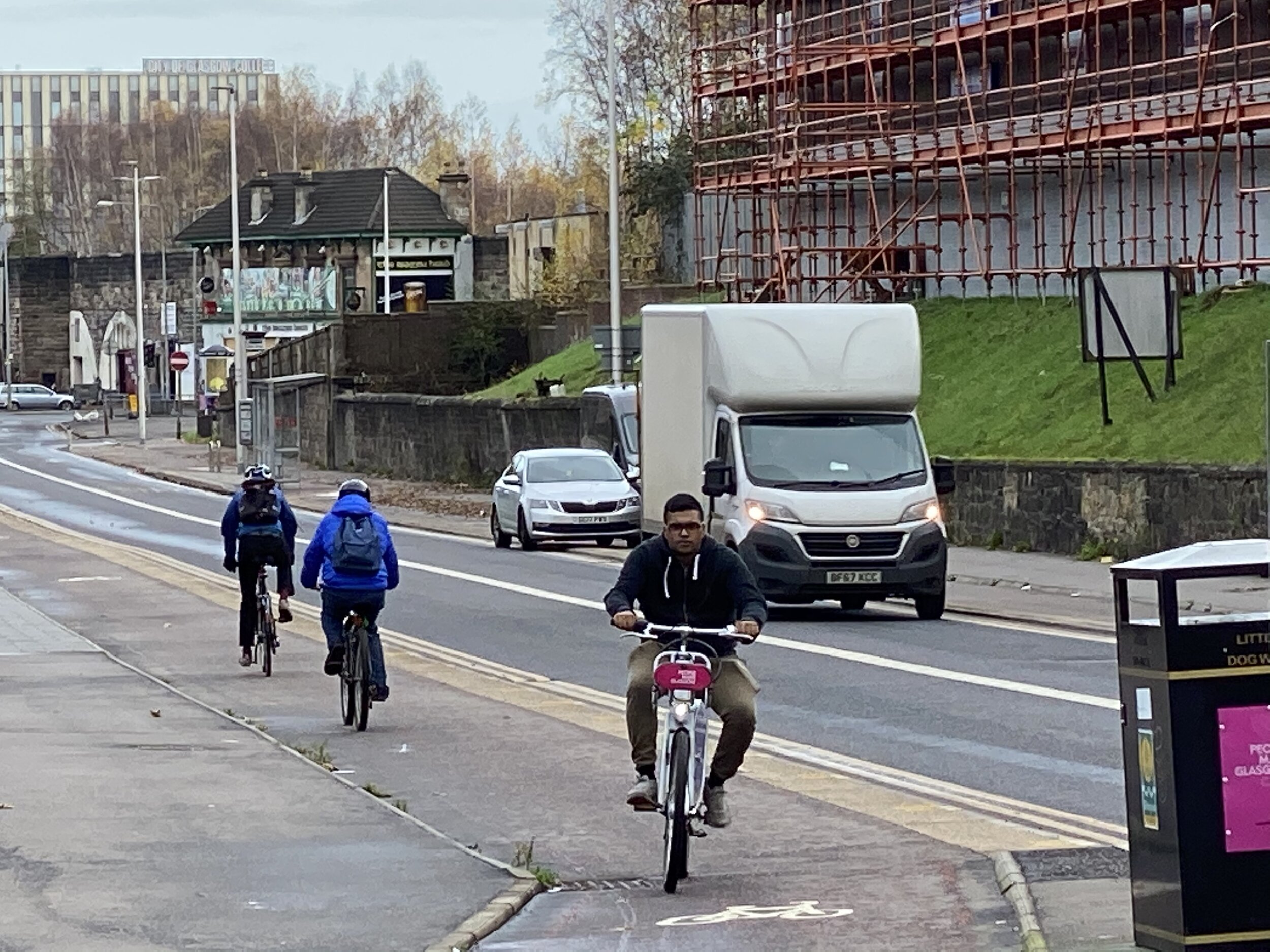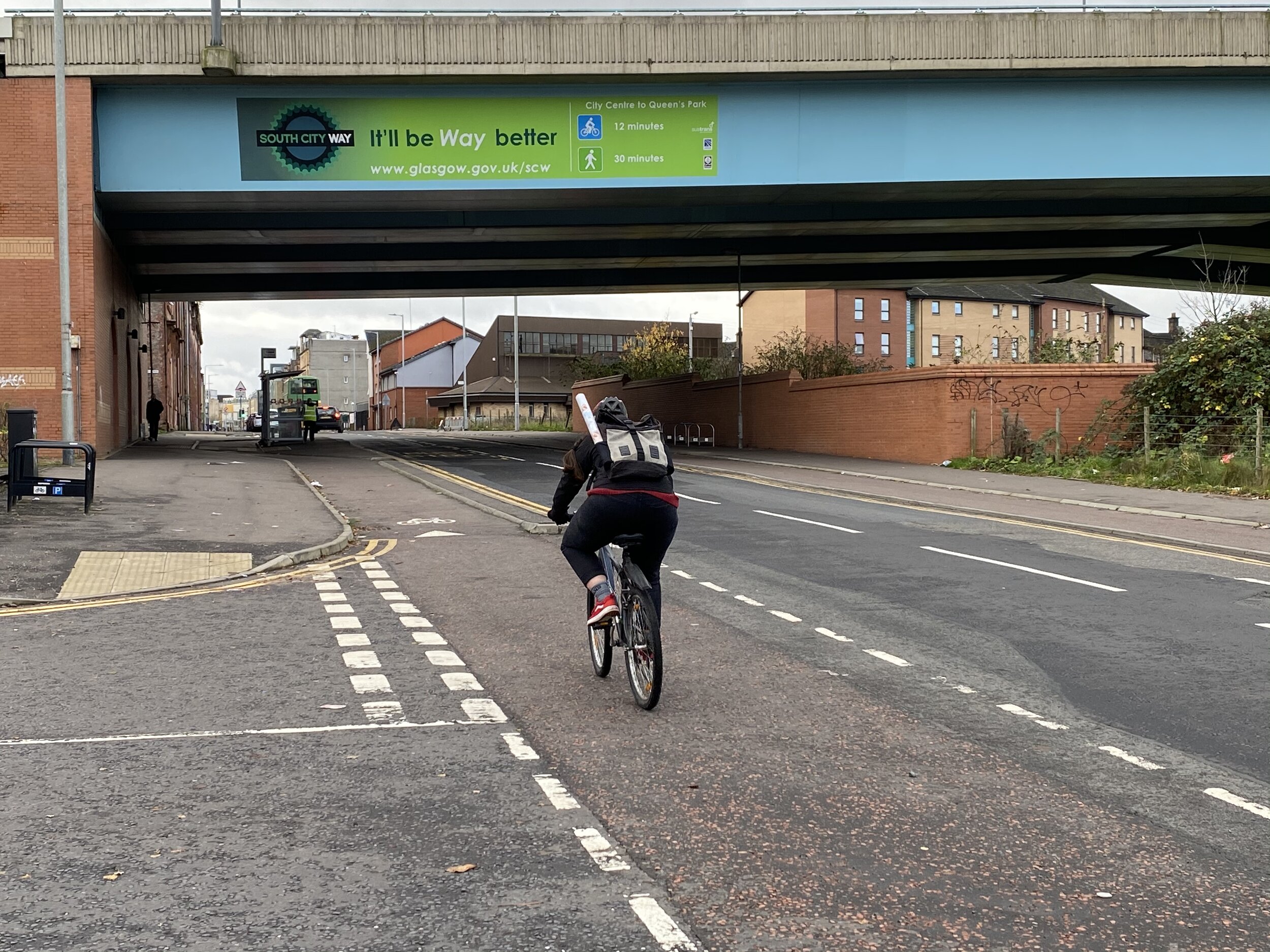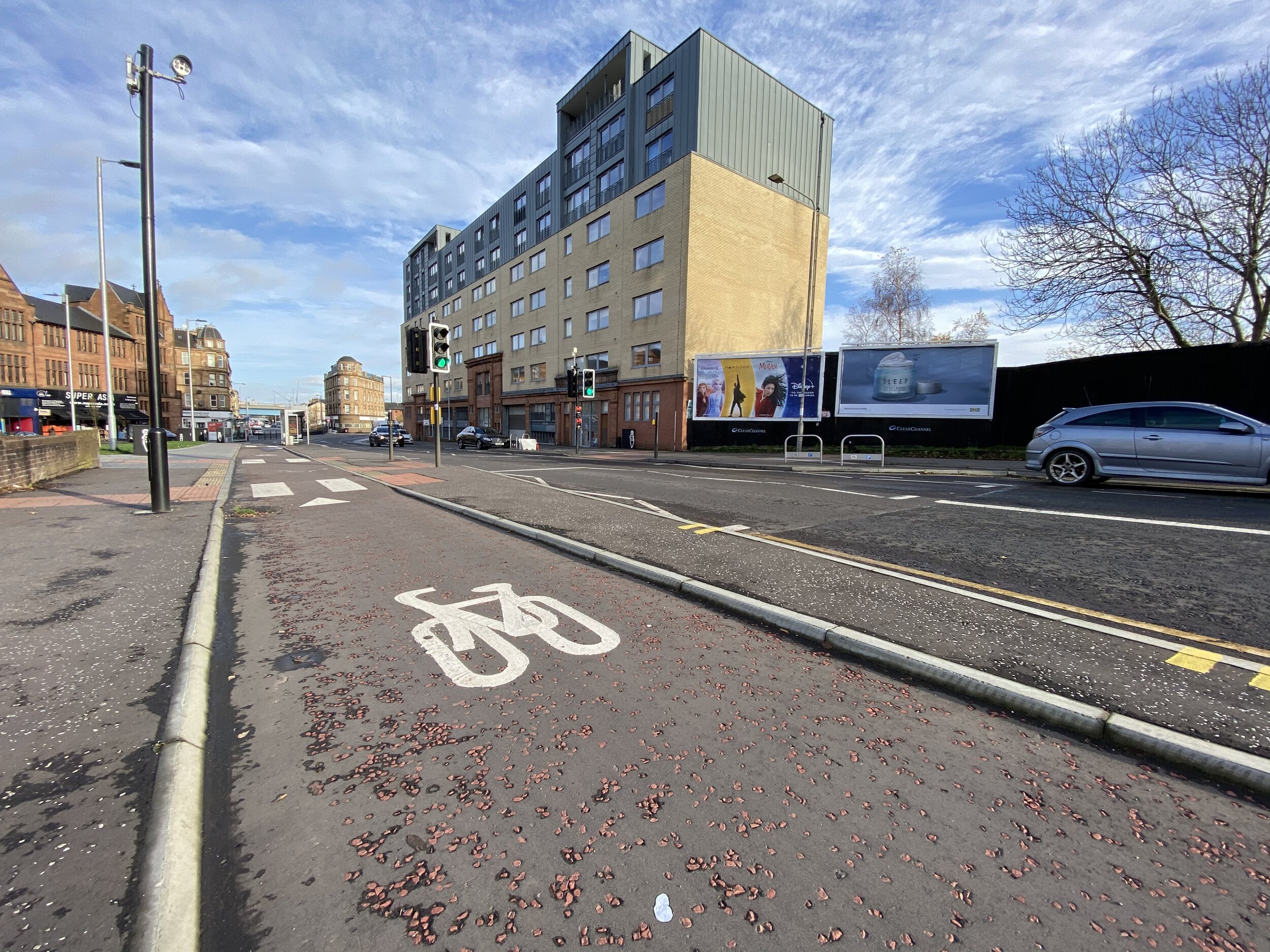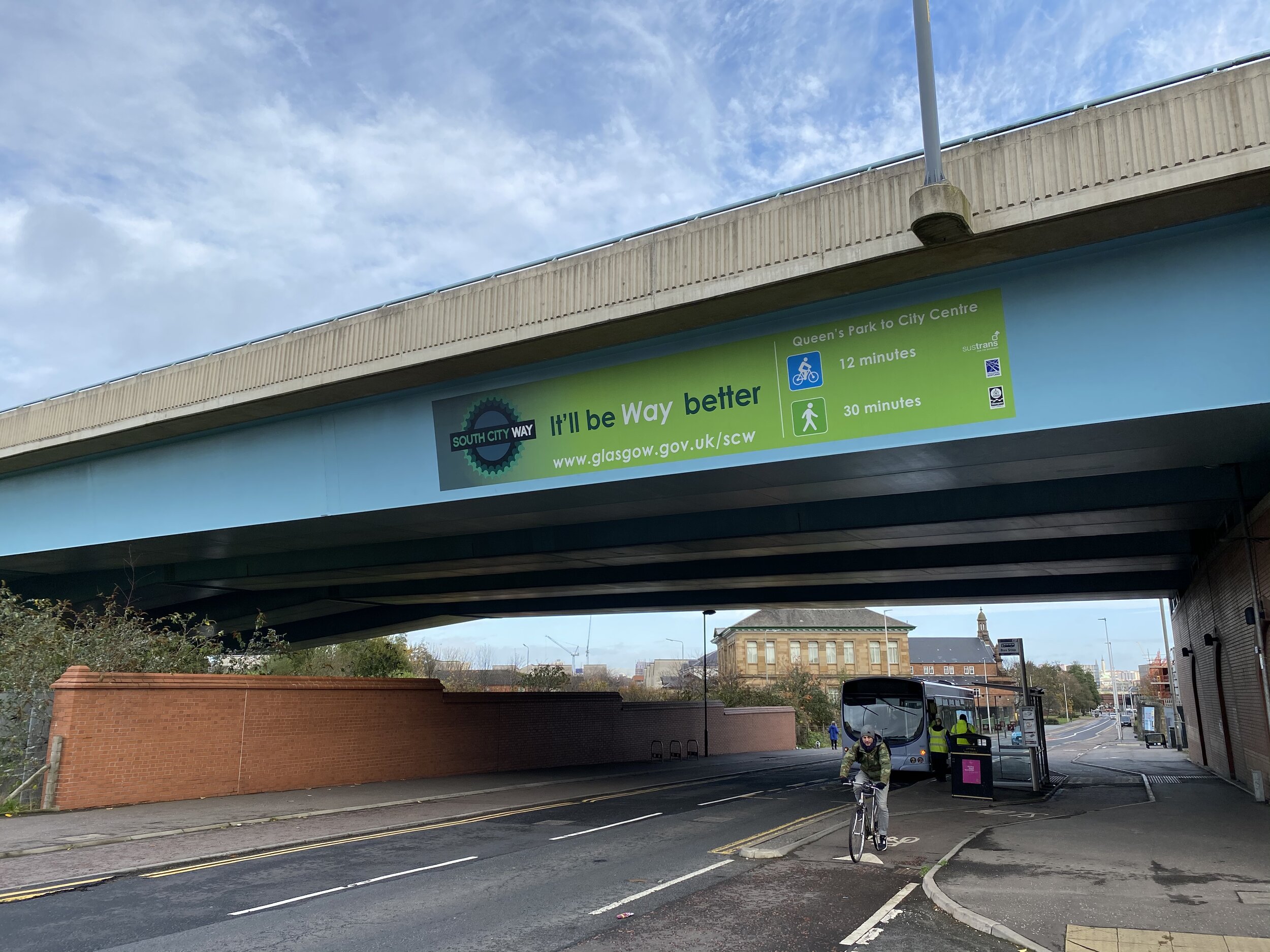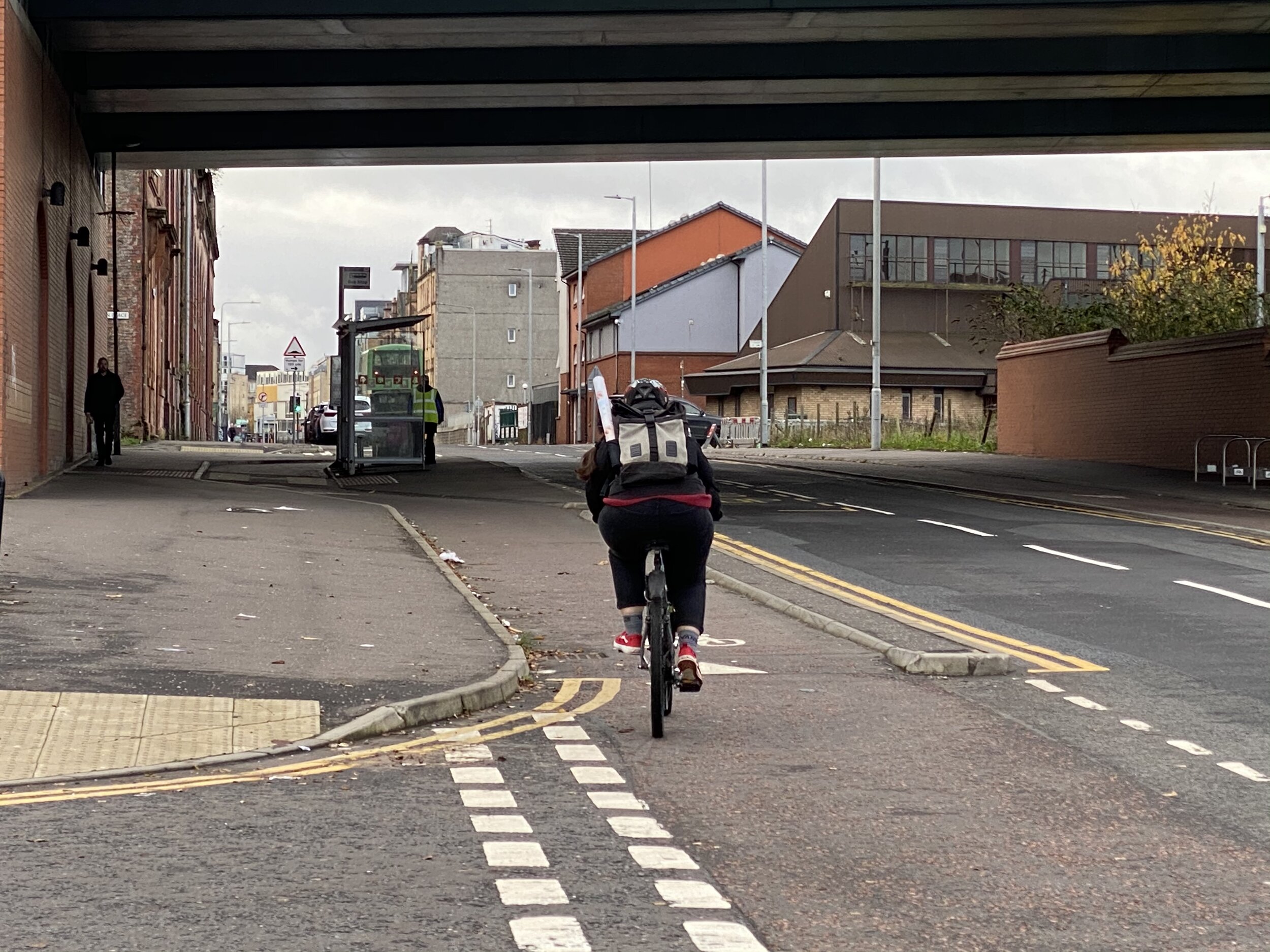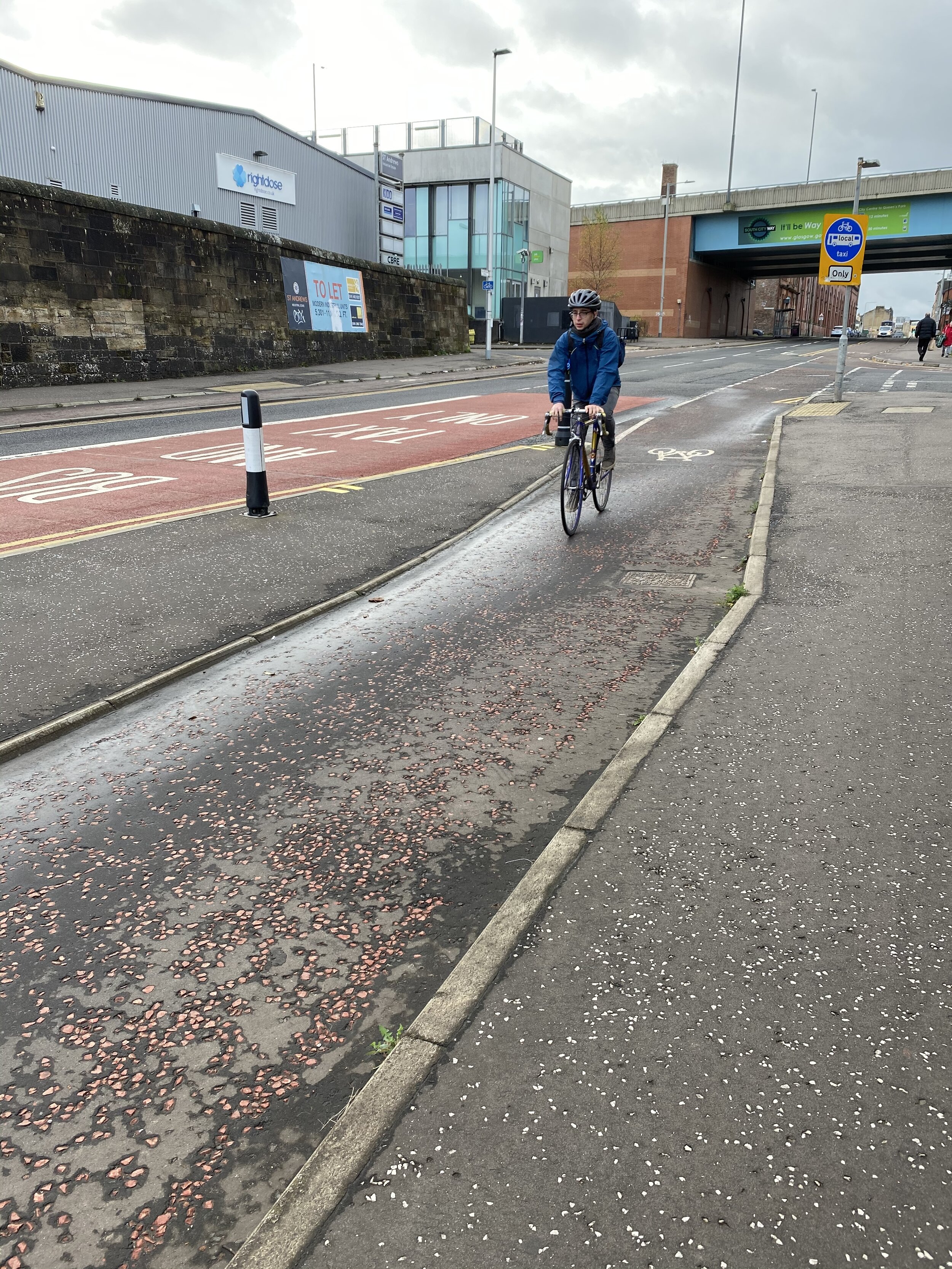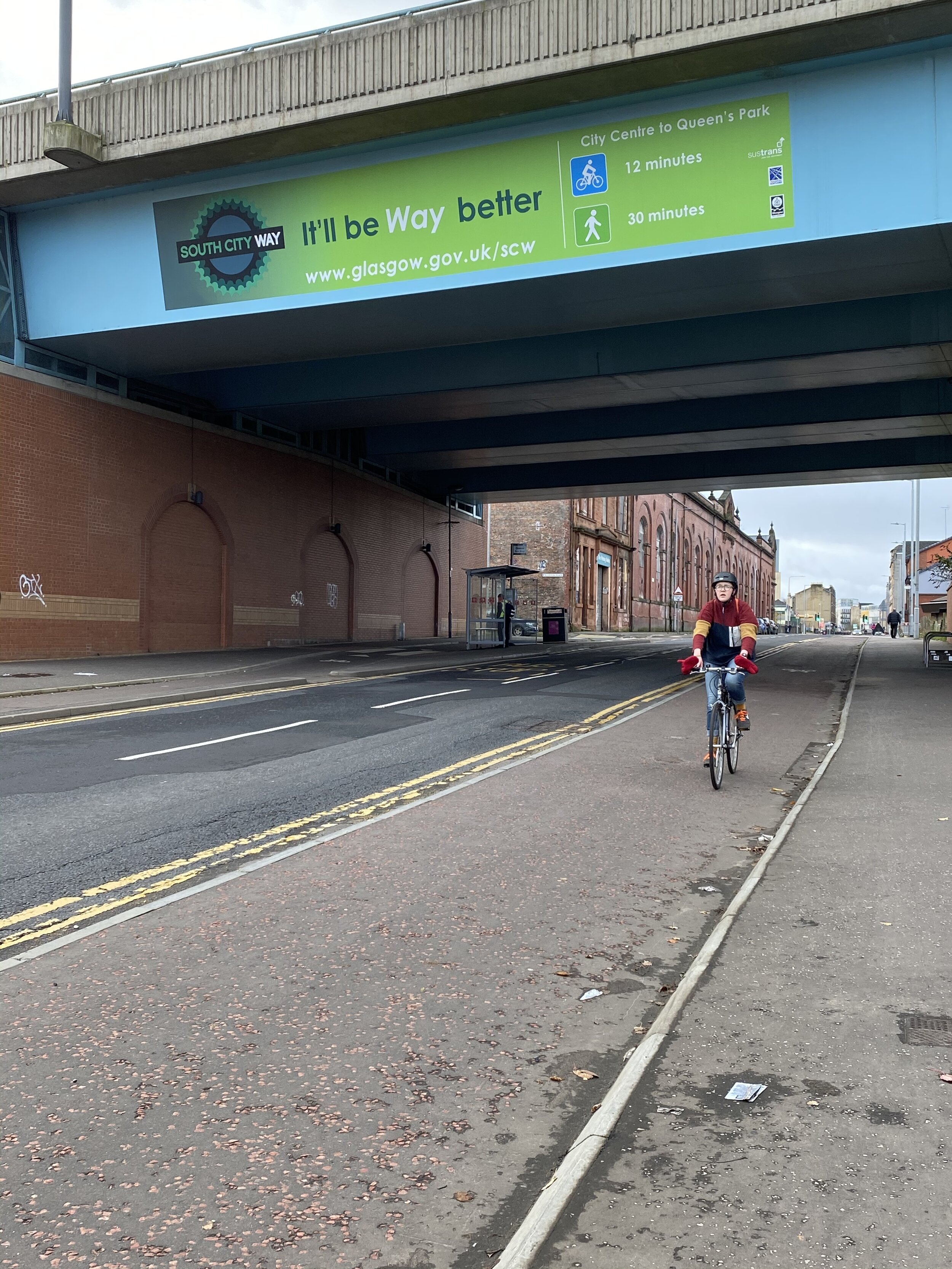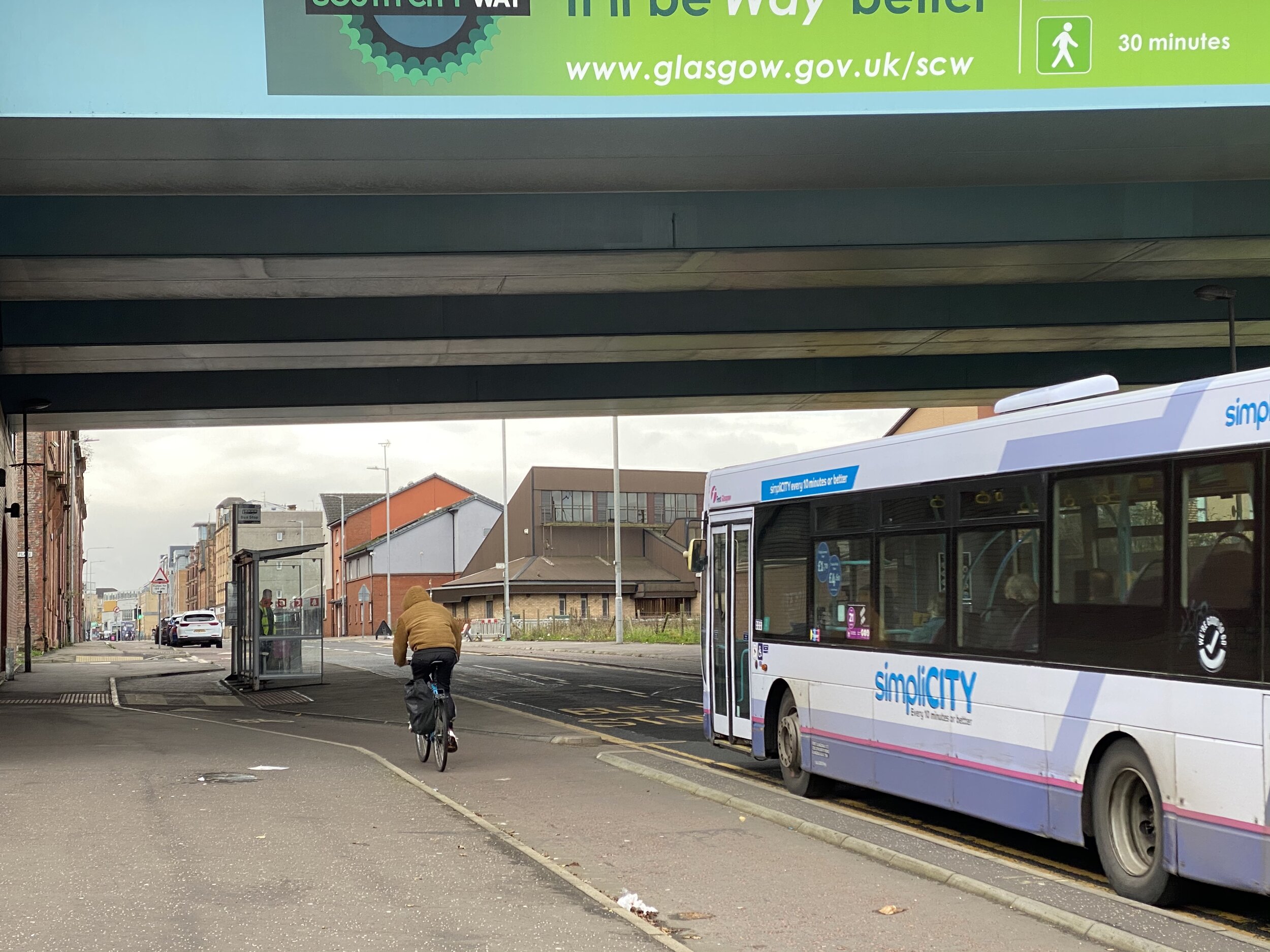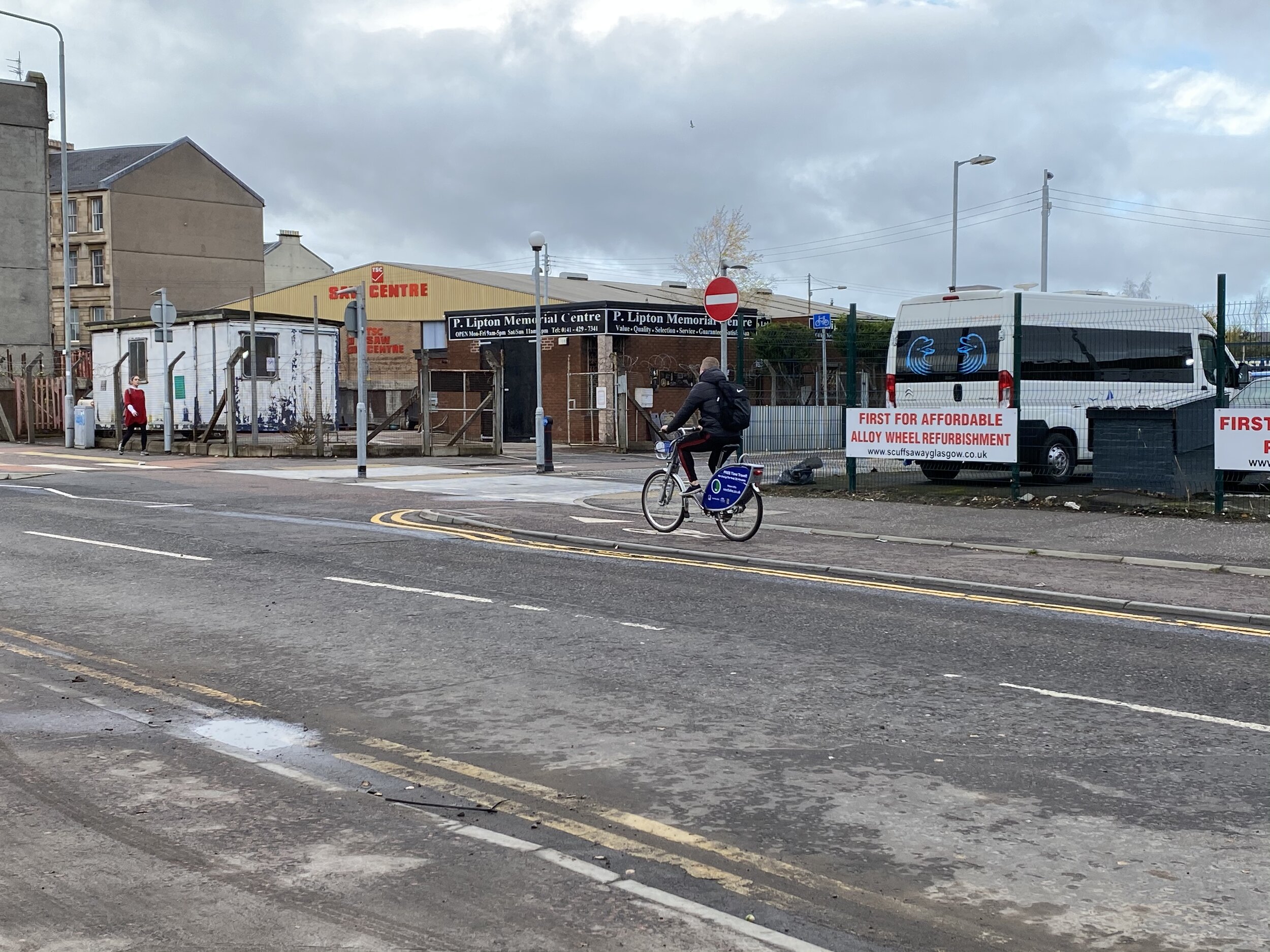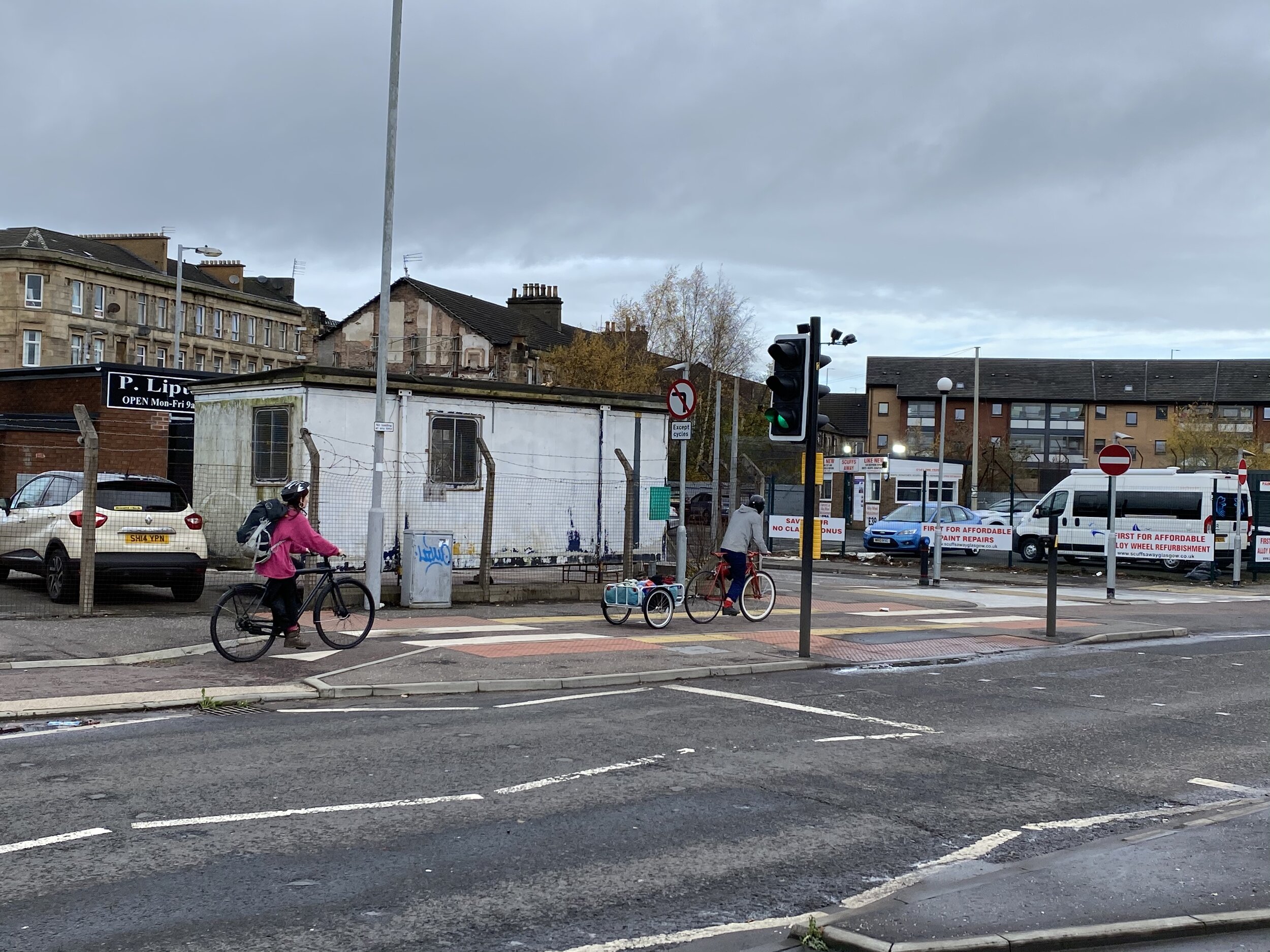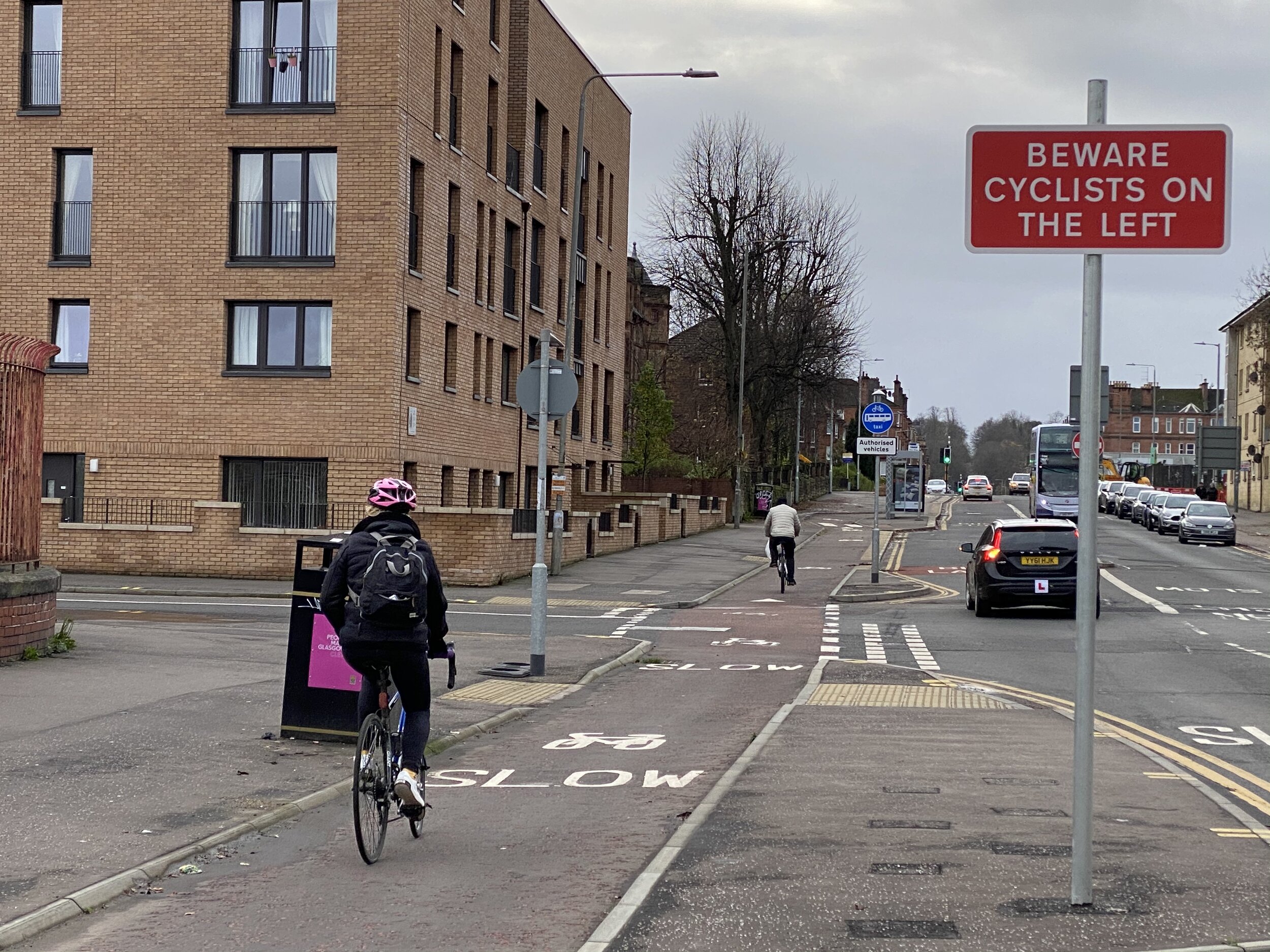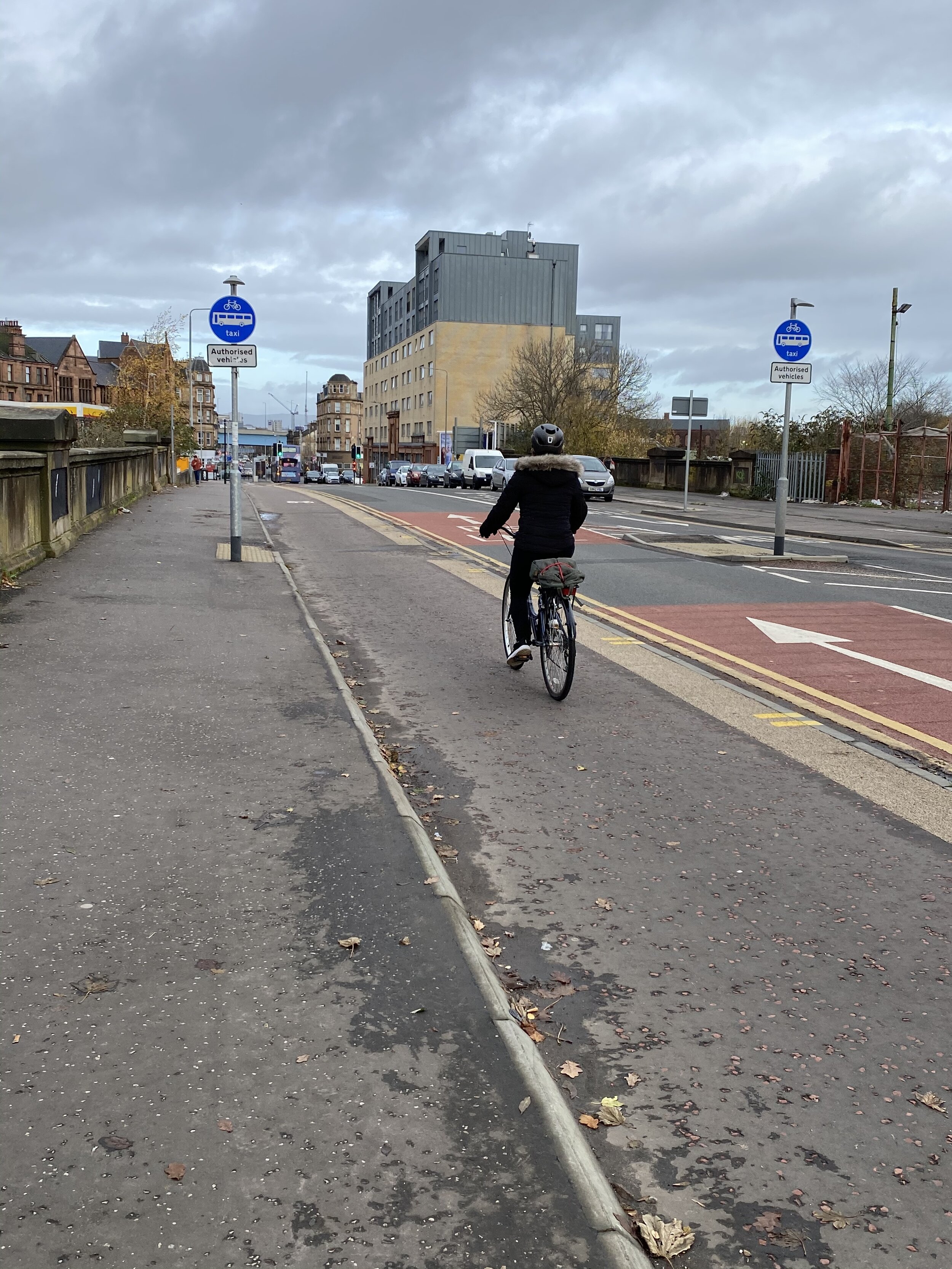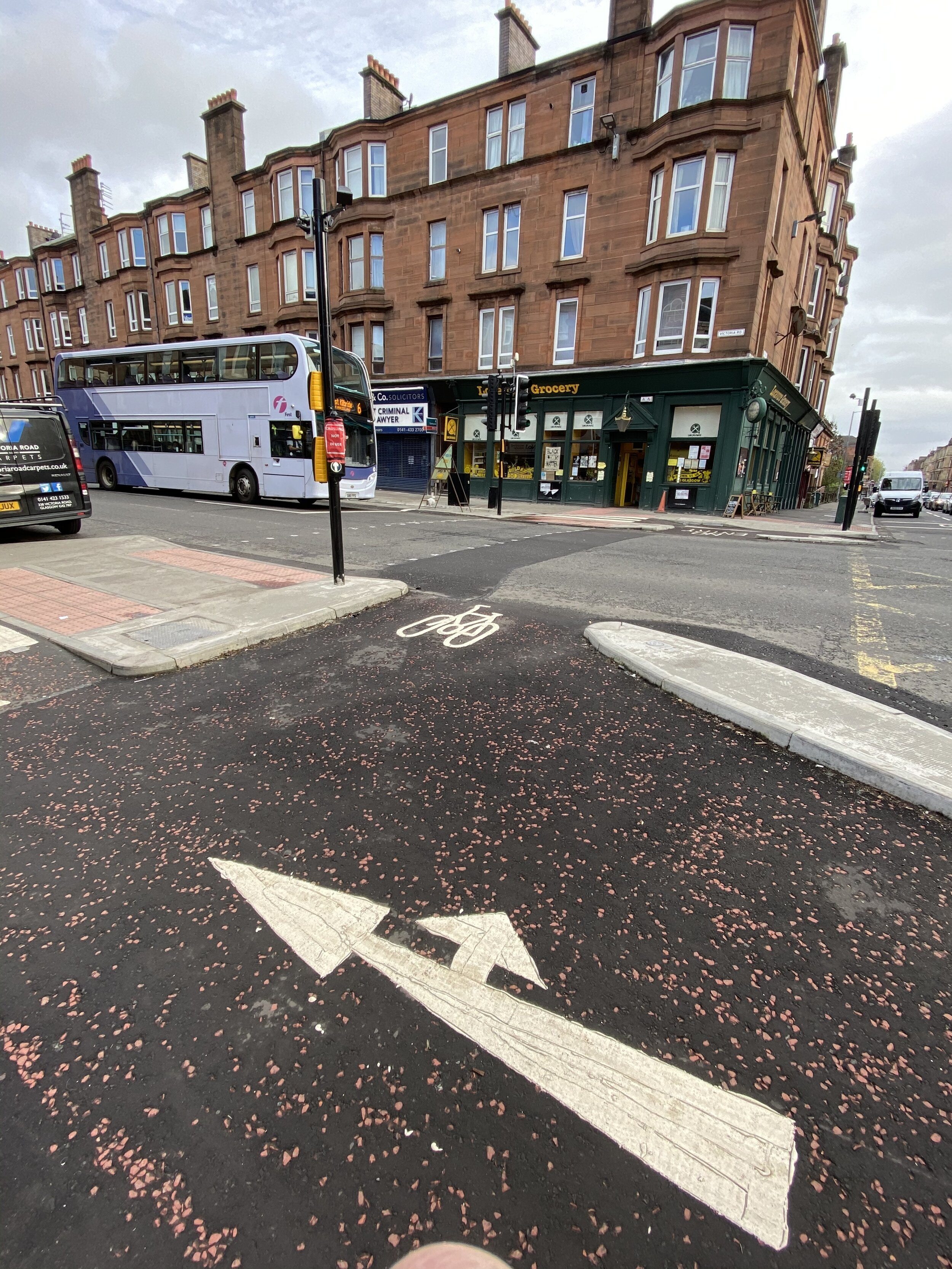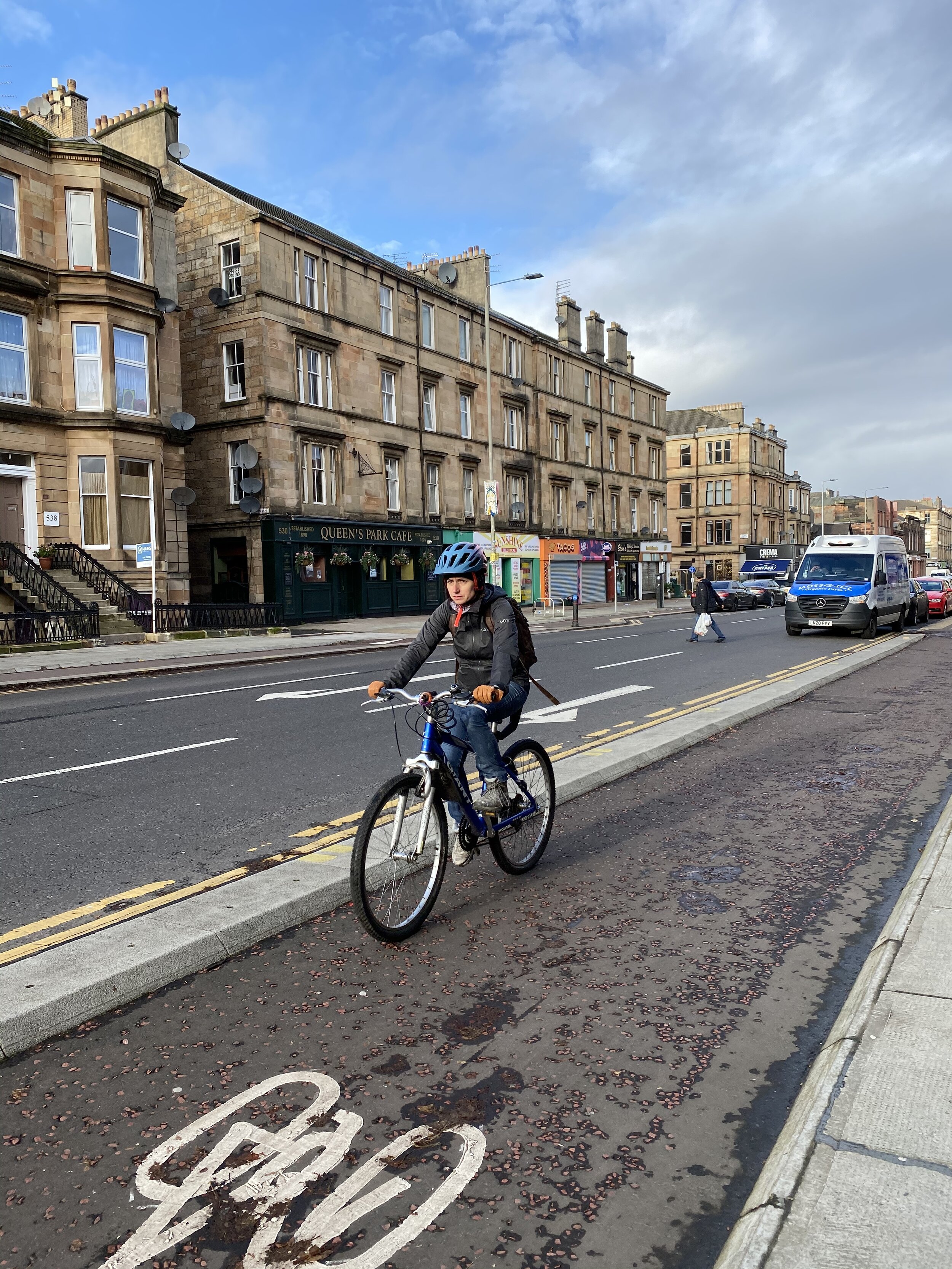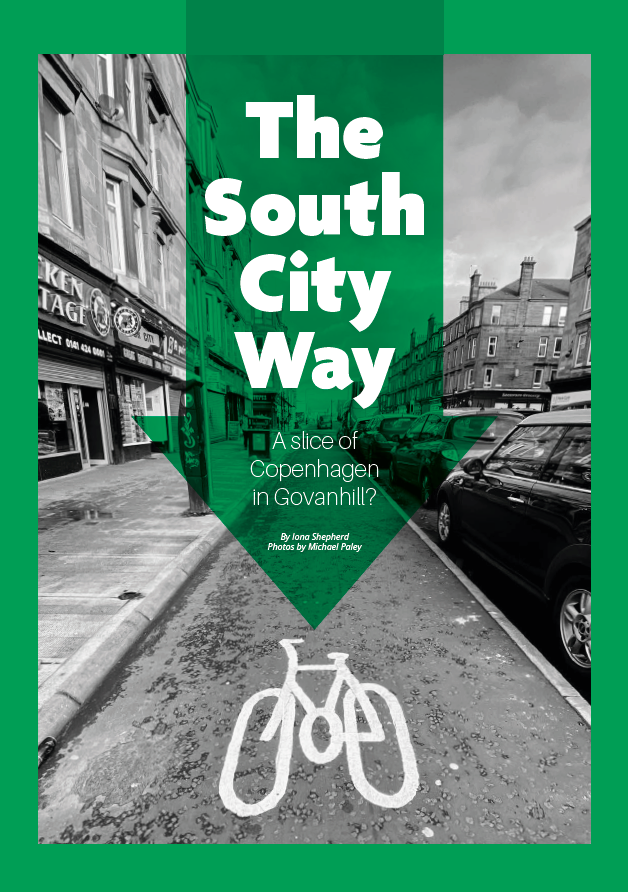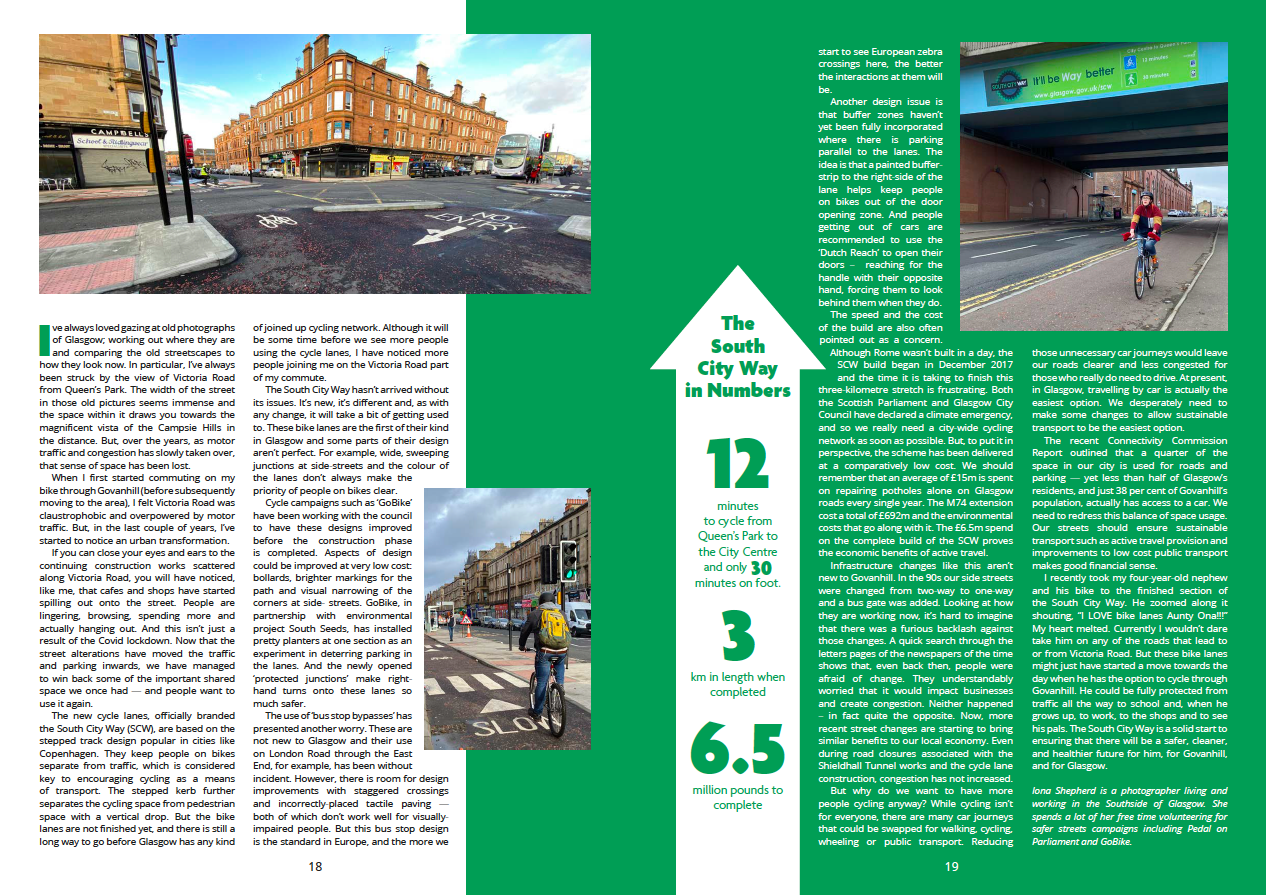The South City Way: A slice of Copenhagen in Govanhill?
In Issue 1, cycling campaigner Iona Shepherd wrote about the difference that the South City Way could make to the neighbourhood and addressed some of the key criticisms levelled against it.
by Iona Shepherd | Photos by Michael Paley
I’ve always loved gazing at old photographs of Glasgow; working out where they are and comparing the old streetscapes to how they look now. In particular, I’ve always been struck by the view of Victoria Road from Queen’s Park. The width of the street in those old pictures seems immense and the space within it draws you towards the magnificent vista of the Campsie Hills in the distance. But, over the years, as motor traffic and congestion has slowly taken over, that sense of space has been lost.
When I first started commuting on my bike through Govanhill (before subsequently moving to the area), I felt Victoria Road was claustrophobic and overpowered by motor traffic. But, in the last couple of years, I’ve started to notice an urban transformation that is giving us back some of that space we once had.
If you can close your eyes and ears to the continuing construction works scattered along Victoria Road, you will have noticed, like me, that cafes and shops have started spilling out onto the street. People are lingering, browsing, spending more and actually hanging out. And this isn’t just a result of the Covid lockdown. Now that the street alterations have moved the traffic and parking inwards, we have managed to win back some of the important shared space we once had — and people want to use it again.
The new cycle lanes, officially branded the South City Way (SCW), are based on the stepped track design popular in cities like Copenhagen. They keep people on bikes separated from motor traffic which research has shown is key to encouraging cycling as a means of transport. The stepped kerb further separates the cycling space from pedestrian space with a vertical drop. But the bike lanes are not finished yet, and there is still a long way to go before Glasgow has any kind of joined up cycling network. Although it will be some time before we see more people using the cycle lanes, I have noticed more people joining me on the Victoria Road part of my commute.
The South City Way hasn’t arrived without its issues. It’s new, it’s different and, as with any change, it will take a bit of getting used to. These bike lanes are the first of their kind in Glasgow and some parts of their design aren’t perfect. For example, wide, sweeping junctions at side-streets and the colour of the lanes don’t always make the priority of people on bikes clear.
Cycle campaigns such as ‘GoBike’ have been lobbying the council to have these designs improved before the construction phase is completed. Aspects of design could be improved at very low cost: bollards, brighter markings for the path and visual narrowing of the corners at side- streets. GoBike, in partnership with environmental project South Seeds, has installed pretty planters at one section as an experiment in deterring parking in the lanes. And the newly opened ‘protected junctions’ make right-hand turns for people on bikes so much safer.
The use of ‘bus stop bypasses’ has presented another worry. These are not new to Glasgow and their use on London Road through the East End, for example, has been without incident. However, there is room for design improvements with staggered crossings and incorrectly-placed tactile paving — both of which don't work well for visually-impaired people. But this bus stop design is the standard in Europe, and the more we start to see zebra crossings used in Glasgow, the better the interactions at them will be.
Another design issue is that buffer zones haven't yet been fully incorporated where there is parking parallel to the lanes. The idea is that a painted buffer-strip to the right-side of the lane helps keep people on bikes out of the door opening zone. And people getting out of cars are recommended to use the ‘Dutch Reach’ to open their doors – reaching for the handle with their opposite hand, forcing them to look behind them when they do.
The speed and the cost of the build are also often pointed out as a concern. Although Rome wasn’t built in a day, the SCW build began in December 2017 and the time it is taking to finish this three-kilometre stretch is frustrating. Both the Scottish Parliament and Glasgow City Council have declared a climate emergency, and so we really need a city-wide cycling network as soon as possible.
To put the cost into perspective, the scheme is likely to be delivered at a cost of £6.5m, which is comparatively low. It is useful to compare this with the average of £15m that is spent on repairing potholes alone on Glasgow roads every single year. The M74 extension cost a total of £692m and the has environmental costs that go along with it. The proven economic benefits to an area, and the cost to climate change are important to consider when providing safe active travel routes.
Infrastructure changes like this aren’t new to Govanhill. In the 90s, our side streets were changed from two-way to one-way and a bus gate was added. Looking at how they are working now, it’s hard to imagine that there was a furious backlash against those changes. A quick search through the letters pages of the newspapers of the time shows that, even back then, people were afraid of change. They understandably worried that it would impact businesses and create congestion. Neither happened – in fact quite the opposite. Now, more recent street changes are starting to bring similar benefits to our local economy. Even during road closures associated with the Shieldhall Tunnel works and the cycle lane construction, congestion has not increased.
But why do we want to have more people cycling anyway? Other cities have shown us that increases in active travel improves air pollution, road congestion, traffic safety, our health and our local economy. While cycling isn’t for everyone, there are many short car journeys that could be swapped for walking, cycling, wheeling or public transport. Reducing those unnecessary car journeys would leave our roads clearer for those who really do need to drive. At present, in Glasgow, travelling by car is actually the easiest option. We desperately need to make some changes to allow sustainable transport to be the easiest option.
The recent Connectivity Commission Report outlined that a quarter of the space in our city is used for roads and parking — yet less than half of Glasgow’s residents, and just 38 per cent of Govanhill’s population, actually has access to a car. We need to redress this balance of city space to make it more inclusive for everyone. With improvements to low-cost public transport and with separated cycling and wheeling routes, we can make sustainable transport a safer, more direct and cost effective choice. For many people, a choice that could be easier and more attractive than driving a car
I recently took my four-year-old nephew and his bike to the finished section of the South City Way. He zoomed along it shouting, “I LOVE bike lanes Aunty Ona!” My heart melted. Currently I wouldn’t dare take him on any of the roads that lead to or from Victoria Road. But these bike lanes might just have started a move towards the day when he has the option to cycle through Govanhill. He could be fully protected from traffic all the way to school and, when he grows up, to work, to the shops and to see his pals.
The South City Way is a solid start to ensuring that there will be a safer, cleaner, and healthier future for him, for Govanhill, and for Glasgow.
Iona Shepherd is a photographer living and working in the Southside of Glasgow. She spends a lot of her free time volunteering for safer streets campaigns including Pedal on Parliament and GoBike.
